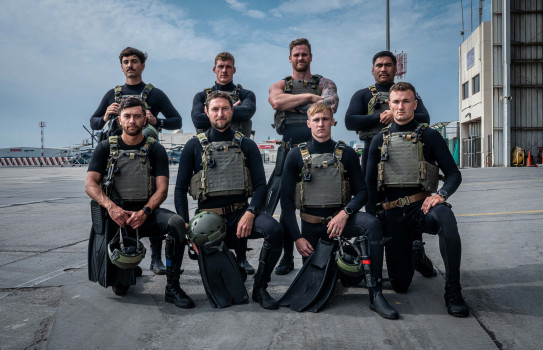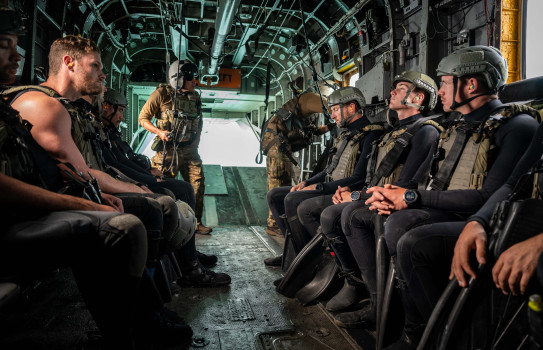
New Zealand-led task force makes $NZ332-million drug bust in the Middle East
14 March 2025
Unfortunately you are viewing this website on an outdated browser which does not support the necessary features for us to provide an adequate experience. Please switch to a modern browser such as latest version of Google Chrome, Mozilla Firefox, Apple Safari or Microsoft Edge.
Ngā mihi nui
Royal New Zealand Navy divers and hydrographers have been working with the best in the Maritime Counter Measures (MCM) profession during a recent exercise in Bahrain.
In February, 20 MCM specialists from HMNZS Matataua joined a MCM task group within International Maritime Exercise (IMX) 2025, working alongside colleagues from the Royal Navy, French Navy, Royal Bahraini Naval Force, United Arab Emirates Navy and the Japan Maritime Self-Defense Force.
The exercise included locations in the Arabian Gulf, Gulf of Oman, Arabian Sea, Indian Ocean, Gulf of Aden and Red Sea.
As part of Combined Task Group 3, Matataua personnel focused on ‘Break Out’ mine countermeasures in Bahrain territorial waters, where they had to locate and ‘dispose’ of sea mines.
Able Diver Karaitiana-Hay said they conducted emergency drill operations, including lift bag diving where a bag is inflated to make a ground mine buoyant and pouncer operations, where divers jump into the sea from a helicopter to neutralise a floating mine.
“The water had a decent visibility of five metres. On one of the dives we encountered a friendly but venomous sea snake!”
There were differences in procedure - the height of the jump from the US Navy helicopter was happily less than other pouncer operations the New Zealand divers have experienced, he said. But Matataua’s approach to MCM was found to be very similar to the Royal Navy, with a focus on technology and modular autonomous systems to achieve the mission.

HMNZS Matataua divers pose for a photo prior to insertion. Photo: US Navy

HMNZS Matataua divers prepare to jump from an MH-53E Sea Dragon helicopter during cast and recovery drills. Photo: US Navy
An important aspect of the MCM cycle is the search and locate function, undertaken by hydrographers who deploy Autonomous Underwater Vehicles (AUV) with sonar to locate mine-like objects.
Leading Hydrographic Survey Technician Teao said their team was given a zone to search and clear.
“We were fortunate to experience how the Royal Navy, French Navy and United States Navy operated their AUVs,” he said.
“On one occasion the USN used four REMUS 100 AUVs concurrently, which is a very cool situation for any AUV team.”
“My favourite interactions were between the French and myself, trying to ask each other questions and trying to understand each other’s answers.”
He says he benefitted from seeing the different software being utilised across different nations.
“It’s all stimulating my passion for AUV knowledge.”
Lieutenant Commander Miles Amery, Matataua’s Operations Officer, said the exercise showcased the highly deployable, modular and adaptable nature of Matataua’s mine countermeasure abilities.
“Tactically, it was an opportunity to exercise our MCM capability and train our personnel in a realistic mine threat environment,” he said.
This exercise mainly involved mines on the seabed, but Matataua could be asked to deal with moored, drifting or attached mines, detonated by contact, acoustic, magnetic, pressure or by remote.
“These exercises not only build our experience and interoperability with international coalition partners, but fosters our close defence relations with them. After all, you can’t surge trust in a time of crisis.”